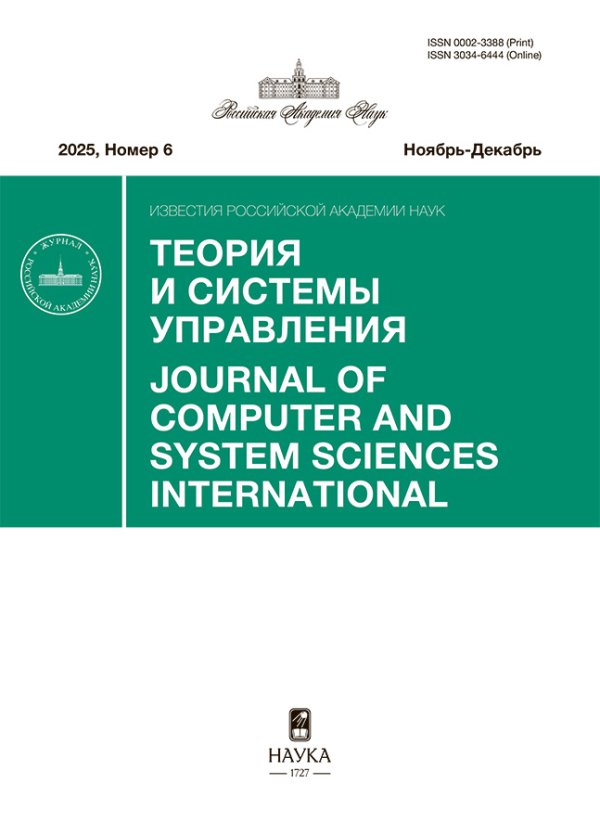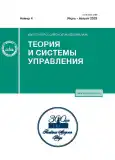Privileged Learning Using Regularization in the Problem of Evaluating the Human Posture
- Authors: Kaprielova M.S.1, Neichev R.G.2, Tikhonova A.D.2
-
Affiliations:
- Federal Research Center “Computer Science and Control,” Russian Academy of Sciences, 119333, Moscow, Russia
- Moscow Institute of Physics and Technology, 141701, Dolgoprudny, Moscow oblast, Russia
- Issue: No 4 (2023)
- Pages: 121-124
- Section: ARTIFICIAL INTELLIGENCE
- URL: https://journals.rcsi.science/0002-3388/article/view/136883
- DOI: https://doi.org/10.31857/S000233882303006X
- EDN: https://elibrary.ru/EULHZW
- ID: 136883
Cite item
Full Text
Abstract
The problem of evaluating a person’s posture from video data is solved. Various key points of the human body are analyzed. We study the change in the accuracy of a fixed model when using different proportions in the regularization term of the loss function. It is shown that for a fixed number of training epochs, the accuracy of the model differs depending on the selected proportions. In addition, it is shown that the linear correlation between the trajectories of the key points that are part of the regularization term is not the main criterion for predicting the effectiveness of applying the regularization term of the loss function.
About the authors
M. S. Kaprielova
Federal Research Center “Computer Science and Control,” Russian Academy of Sciences, 119333, Moscow, Russia
Email: kaprielova.ms@phystech.edu
Россия, Москва
R. G. Neichev
Moscow Institute of Physics and Technology, 141701, Dolgoprudny, Moscow oblast, Russia
Email: neychev@phystech.edu
Россия, Москва
A. D. Tikhonova
Moscow Institute of Physics and Technology, 141701, Dolgoprudny, Moscow oblast, Russia
Author for correspondence.
Email: tikhonova.ad@phystech.edu
Россия, Москва
References
- Vapnik V., Vashist A. A New Learning Paradigm: Learning Using Privileged Information // Neural Networks. 2009. V. 22. P. 544–557.
- Lehrmann A., Gehler P., Nowozin S. A Non-parametric Bayesian Network Prior of Human Pose // Proc. IEEE Intern. Conf. On Computer Vision. Sydney, 2013. P. 1281–1288.
- Ionescu C., Papava D., Olaru V., Sminchisescu C. Human3. 6m: Large Scale Datasets and Predictive Methods for 3d Human Sensing in Natural Environments // IEEE Trans. On Pattern Analysis And Machine Intelligence. 2013. V. 36. P. 1325–1339.
- Ignatov A., Strijov, V. Human Activity Recognition Using Quasiperiodic Time Series Collected from a Single Tri-axial Accelerometer // Multimedia Tools And Applications. 2016. V. 75. P. 7257–7270.
- Katrutsa A., Strijov V. Stress Test Procedure for Feature Selection Algorithms // Chemometrics And Intelligent Laboratory Systems. 2015. V. 142. P. 172–183.
- Cliff O., Lizier J., Tsuchiya N., Fulcher B. Unifying Pairwise Interactions in Complex Dynamics // ArXiv 2022. ArXiv Preprint ArXiv:2201.11941.
- Trumble M., Gilbert A., Malleson C., Hilton A., Collomosse J. Total Capture: 3d Human Pose Estimation Fusing Video and Inertial Sensors // Proc. Of 28th British Machine Vision Conf. London, 2017. P. 1–13.
- Márquez-Neila P., Salzmann M., Fua P. Imposing Hard Constraints on Deep Networks: Promises and Limitations // ArXiv Preprint ArXiv:1706.02025 (2017).
- De Luca G., Lampoltshammer T., Scholz, J. How Many Equations of Motion Describe a Moving Human? // ArXiv Preprint ArXiv:2207.14331 (2022).
- Zheng C., Zhu S., Mendieta M., Yang T., Chen C., Ding, Z. 3d Human Pose Estimation with Spatial and Temporal Transformers // Proc. IEEE/CVF Intern. Conf. On Computer Vision. Montreal, 2021. P. 11656–11665.
Supplementary files










